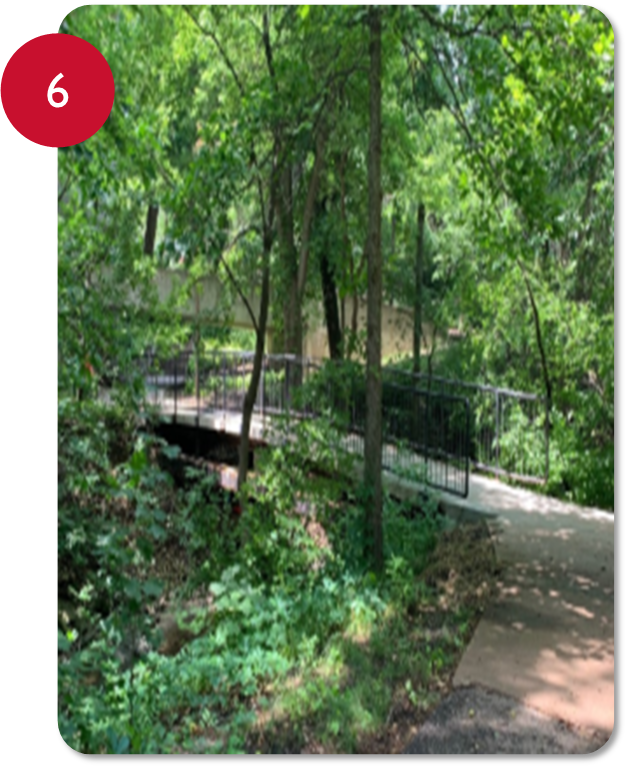Fall - Map and Pause Location Details
Part of the richness of the Strolls for Well-being at ISU is the intentional selection of the pause locations for the Fall 2021. Locations were selected to include various natural settings and the amazing art that is part of the ISU campus. The following map includes the specific locations along with the history and/or information about the art that you will find at the pause. Download the map and history.
Now pick a stroll, or a pause, that you would like to explore. Check the history and find it on the map as you set out to enjoy a simple mindfulness practice.
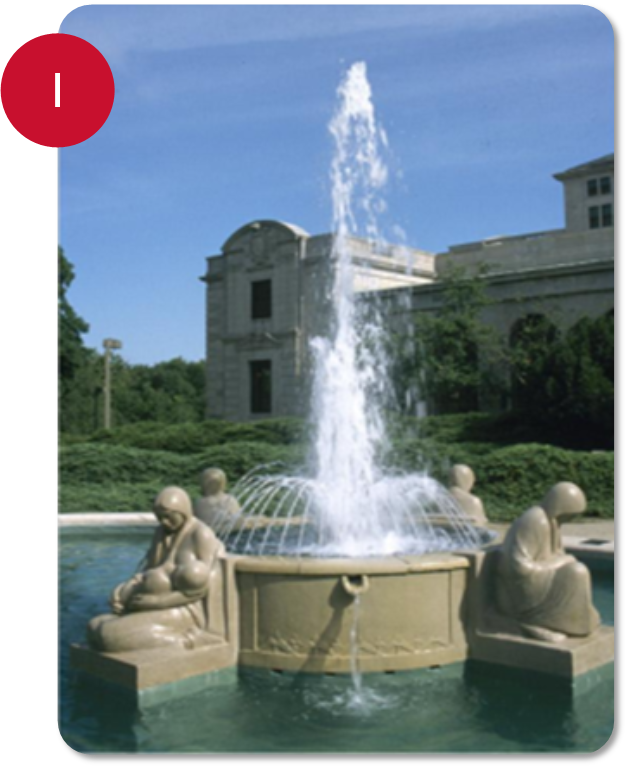
PAUSE 1: Circle of Life
Location: The Fountain of the Four Seasons on the north side of the Memorial Union.
Sculpture created in 1941 by Christian Petersen. Inspired by the Osage chant of thanksgiving and placed around a fountain, the four seated Native American women face north, south, east, and west, each demonstrating a line of the prayer and the seasonality of the year. The first woman is planting the seed, "Lo, I come to the tender planting." The second bends close to the earth, "Lo, a tender shoot breaks forth." The third holds a harvest basket of maize, "Lo, I collect the golden harvest." The fourth nurses her newborn baby, "Lo, there is joy in my house." Originally born in Denmark in 1885, Christian Petersen eventually emigrated to America to study art and spent 21 years at ISU.
PAUSE 2: Walking the Path
Location: George Washington Carver Plaza, between Carver and Beardshear Halls.
Sculpture created in 1949 by Christian Petersen. The sculpture depicts the scientist George Washington Carver contemplating the peanut, for which he discovered many uses. Carver was the first African American to enroll at Iowa State College, becoming one of its most distinguished graduates. After earning his bachelor’s degree in 1894 and his master’s in 1896, Carver embarked on his lifetime career at the Tuskegee Institute where he won world acclaim for the development of hundreds of profitable uses for many agricultural products like cotton, peanuts, soybeans, and sweet potatoes. Carver was also an accomplished musician, artist, orator, athletic trainer, and student leader.
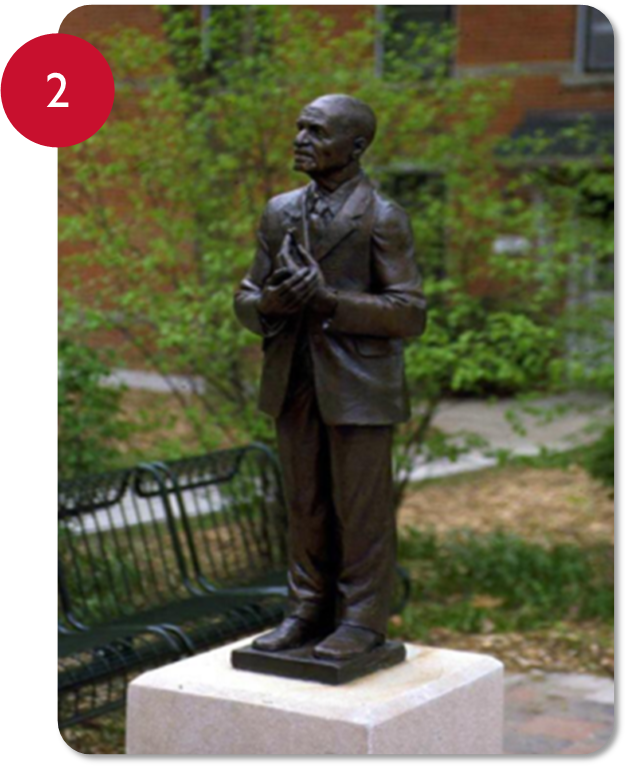
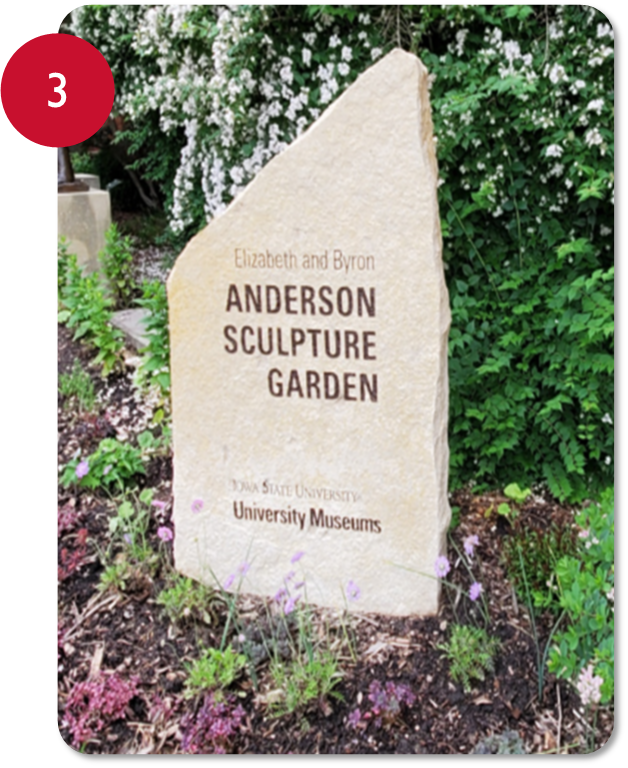
PAUSE 3: Zig Zag Path
Location: Anderson Sculpture Garden, between Beardshear and Morrill Halls.
The Elizabeth and Byron Anderson Sculpture Garden wraps around historic Morrill Hall. Shaded by flowering greenery, winding footpaths lined with perennials and shrubs take visitors through works of primarily American twentieth and twenty-first century sculptures. Ranging in size and material, this collection of artwork represents the diverse character of modern and contemporary sculpture in a natural, accessible setting. The Anderson Sculpture Garden also features rotating exhibitions of sculpture and currently Charles Ginnever: Transforming Perspectives can be viewed.
PAUSE 4: Tree Pavilion
Location: Class of 1910 benches in a pine grove directly east of Morrill Hall.
The tradition of class gifts from Iowa State Alumni was started in 1876. The Class of 1910 gave $300 toward stadium bleachers. On its 50th anniversary, three granite benches were placed at north central campus in honor of the Class of 1910. At this time, majestic pine trees encircle the benches.
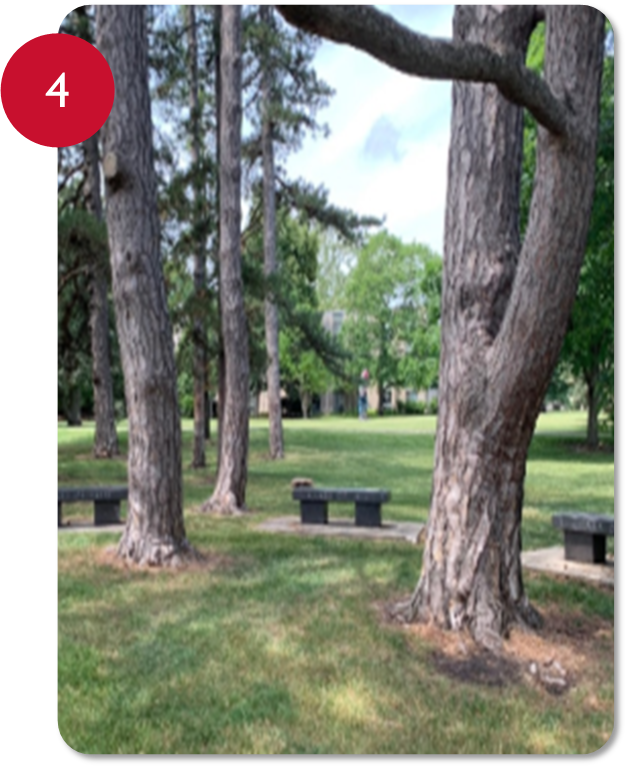
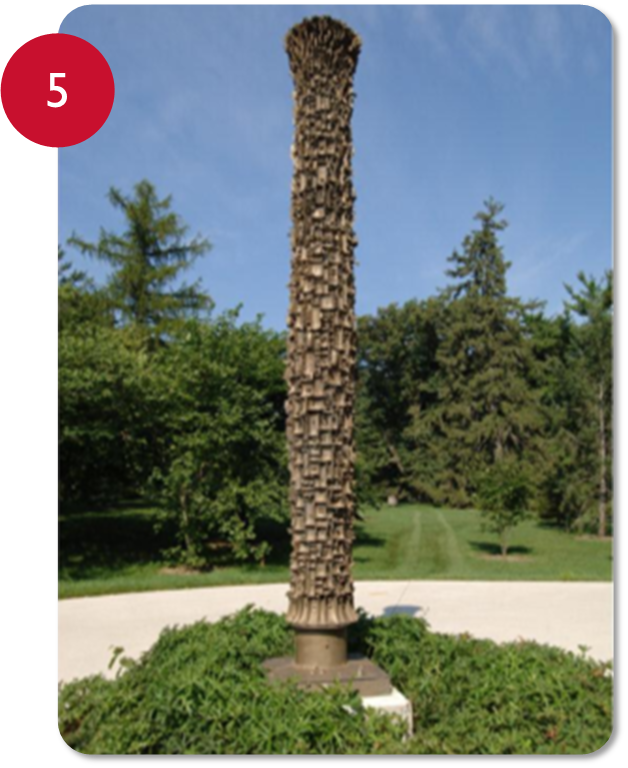
PAUSE 5: Life is a Journey
Location: Gerdin Business Building, on the patio at the southwest corner of the building.
Sculpture “Untitled” created in 1984 by Julius Schmidt. Originally placed at Lagomarcino in 1986, it was moved to Gerdin in 2004. The column resembles Julian Schmidt's earlier cast iron columns that were described as looking like the nests of insects, as well as rockets encircled by myriad pipes and valves. Complementing Gerdin's modern look, it has been suggested that Julius Schmidt's sculpture resembles a futuristic urban setting. Following a discharge from the Navy in WWII, Julius Schmidt went on to study sculpture in America, London and Florence. During his career, Schmidt taught art at multiple universities, before settling at the University of Iowa as head of the graduate sculpture department. Mainly working in cast iron and bronze, Schmidt's sculptures explore the dichotomy between the natural and the mechanical.
PAUSE 6: Moving Waters
Location: Bridge over College Creek, east of the Memorial Union near the parking garage.
College Creek is the main waterway found throughout campus and the watershed that created Lake LaVerne in 1916 (by LaVerne W. Noyes a member of the first graduating class of 1872). In 1963, efforts were taken to install twin eight-foot culverts to run College Creek under Hayward Avenue and Lincoln Way to protect this water way. Since 2009, efforts to keep this waterway clean has been a joint effort by volunteers from campus and the Ames Community. The College Creek Cleanup brings together individuals from all walks of life who care about the environment and the impact it has.
